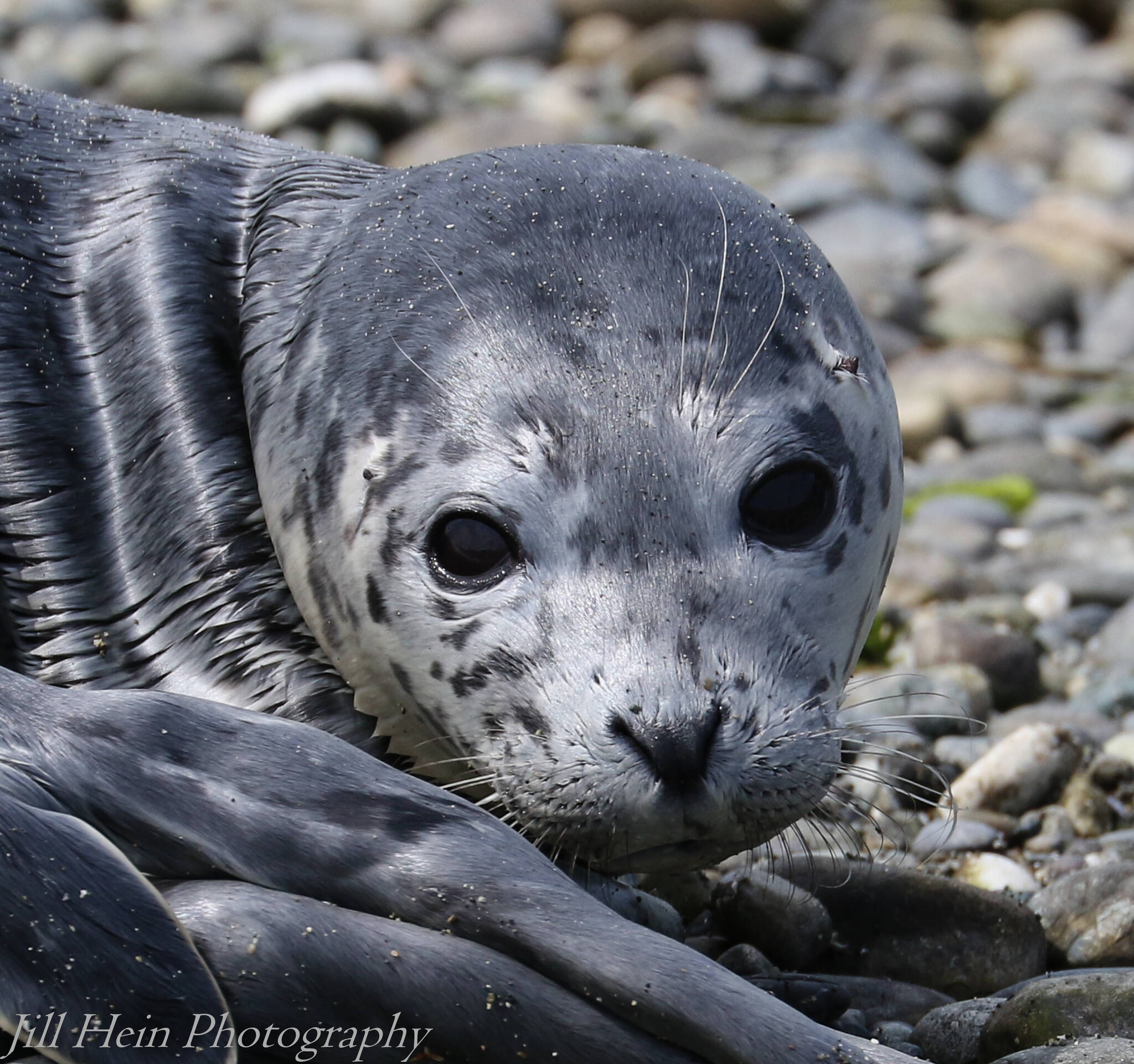Though they may look cute and cuddly, getting too close to a marine mammal on a Whidbey beach can have serious consequences for wildlife, as demonstrated this week.
Orca Network’s Central Puget Sound Marine Mammal Stranding Network received a report on June 9 of a couple picking up a harbor seal pup and taking pictures with it on the beach near Holmes Harbor. By the time Garry Heinrich, the stranding network’s coordinator, heard about the incident, the perpetrators were long gone from the beach.
Getting too close to a harbor seal is a federal offense prohibited by the Marine Mammal Protection Act. People who feed, touch or harass a seal may be investigated by the National Oceanic and Atmospheric Administration, or NOAA.
In this case, no one has been able to identify the couple who bothered the Freeland pup, despite some attempts on social media. Because of this, people violating the Marine Mammal Protection Act often aren’t caught.
“It’s one of the things that’s a little weak, I think, in terms of what NOAA is able to do,” Heinrich said. “The evidence needs to be so, so overwhelming to get adjudicated.”
Over the next couple of days, Heinrich kept a watchful eye on the young pup, who is estimated to be about a week old. Nicknamed Hippogriff, he did not appear to be injured. Heinrich left him alone, hoping that his mother would return to feed him.
According to NOAA, seal pups are born between the months of April and October in Washington. The babies are left ashore by themselves to rest while the mothers are off hunting. Nursing pups remain with their mothers for about four to six weeks. As Heinrich pointed out, the young pinnipeds often have no fear of humans and lack a defense mechanism to protect themselves. Human intervention is why mothers choose to abandon their young.
Heinrich received a call from Nichols Brothers Boat Builders on June 11 about the pup, who was between the company’s boat ramp and the road. It was then that he decided, after consulting with a wildlife veterinarian in the Seattle area, that it was time to step in.
“We really don’t like to collect these animals. We don’t like to take away the chance that mom might be around and come back,” he said. “It’s always that balance, how long do we wait, and how bad off does the animal get? It’s really a hard call.”
Heinrich handed Hippogriff off to rescuers from SR3, or Sealife Response, Rehabilitation and Research, a wildlife rescue operation based in Des Moines. Though underweight and malnourished – he weighs just five kilograms, or 11 pounds – Hippogriff has a good chance at survival and will eventually be released back into the wild when he’s ready.
Heinrich received a report from SR3 Thursday that Hippogriff is doing well and in good health.
“Let’s just hope this kid comes back,” he said.
NOAA advises people who come across a seal – young or fully grown – on the beach to keep a distance of 100 yards. If the animal appears to be injured, leave it alone and call the Central Puget Sound Marine Mammal Stranding Network at 949-233-2822 or 866-672-2638. For other areas of the Salish Sea that don’t include Whidbey Island, call NOAA’s hotline at 866-767-6114.


